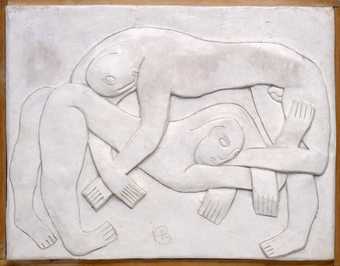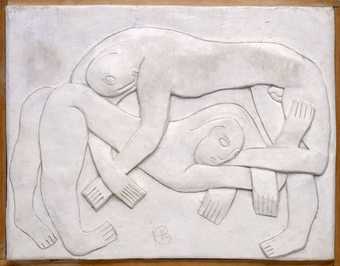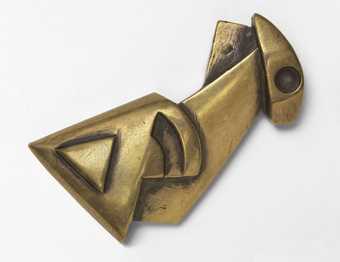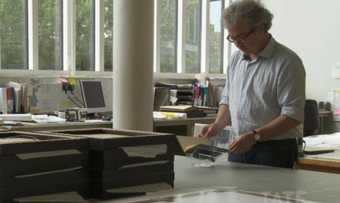
Henri Gaudier-Brzeska
Wrestlers
(1914, cast 1965)
Tate
Why did you select this less-known work by Gaudier-Brzeska for the In Focus project?
I have been interested in Gaudier-Brzeska for some years and had done some research on his work while doing my MA in Sculpture Studies at the University of Leeds and Henry Moore Institute. Since then, I have kept on returning to his work and the exciting and innovative period for sculpture at the beginning of the twentieth century. A couple of years ago, York Art Gallery invited me to work on an essay for the catalogue for the William Etty: Art & Controversy exhibition and I unearthed a lot of material about Etty’s painting The Wrestlers. This sparked off an unexpected fascination in the many overlaps between art and the sport of wrestling in the nineteenth and twentieth centuries. So I brought these two interests together to do some research for Tate on a sculpture that has not received much attention previously. I think it is a really intriguing work visually and materially. Being made from plaster and a cast of the original, it raises all sorts of complex questions about production and reproduction.
What did you discover about the relief while undertaking your research?
I discovered that it has had many lives. The original was carved in plaster (a material which was cheap and easy for Gaudier-Brzeska to source and to work with as an untrained sculptor) in London just before the First World War. When it entered the collection of Jim Ede, who owned Kettle’s Yard in Cambridge, he had several casts made of it as it was his favourite piece by Gaudier-Brzeska, an artist he regarded highly and championed (even though the two never met). Tate’s Wrestlers is one of these casts. I also discovered that Gaudier-Brzeska really researched this work, visiting one of the best-known amateur wrestling clubs in central London to draw the fighters there. It was a wonderful research journey for me as I tried to find evidence of these early-twentieth-century wrestling gyms in the sporting magazines of the day.
What was the source of the imagery?
Gaudier-Brzeska was a compulsive sketcher and he was constantly drawing things. He observed real wrestling bouts in gyms and was fascinated by brawls on the streets of London (he was not averse to getting involved in them either). In his letters, Gaudier-Brzeska mentioned that he sketched a life-model who was also a wrestler. In the project I trace the incredible popular visual culture of wrestling in this period in Britain and the British Empire, and suggest some links with the relief and the many other works with wrestling as their subject matter which the sculptor made.
Why was wrestling important to the artist?
Gaudier-Brzeska was deeply interested in representing the body in movement, and thinking about how to do this in three-dimensions. As well as wrestlers, he represented dancers in his work and I think the two are very much interlinked. He was also cultivating a reputation and artistic persona as something of an anti-establishment, rough and daring artist, so the topic of fighting was an apt one.
In your project you explore ‘muscular modernism’ in art and literature before the First World War. How important is this context for someone looking at the sculpture today?
I think it is important for understanding the cultural networks of which Gaudier-Brzeska was a part. He was extremely close to the poet Ezra Pound and also closely linked to the vorticist movement. My project looks at the Wrestlers reliefs in the context of these avant-garde groupings just before the First World War and considers why fighting and the figure of the fighter was important in this period.
What did you most enjoy about studying Gaudier-Brzeska and this relief at Tate?
This was a really collaborative piece of research. I worked with the poet and wrestler S.J. Fowler, who taught me a lot about the sport. We spent a wonderful morning talking about wrestling poses and moves in front of the work. Steven then went away and wrote an exciting series of poems, which are published alongside my art historical research. I also loved working in the Tate Archive to find out more about the complex story of how this piece came to Tate. And, then, there were the wrestling and sports journals. I spent hours in the British Library reading Edwardian publications such as Health & Strength. The photography and visual culture of sport in this period was really quite amazing. I am also very interested in the possibilities of publishing art historical research online and wrote this piece very much with the fact that it would be published online and most probably read on a screen in mind. It was a fascinating process to work with the Tate Research Department and learn about how they are using digital publishing for developing and disseminating new research about Tate’s collection.



